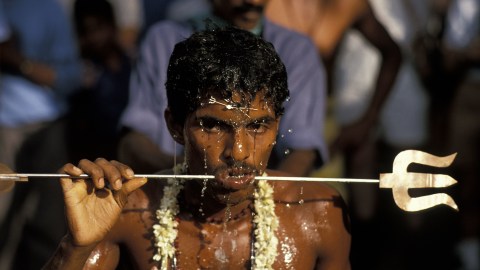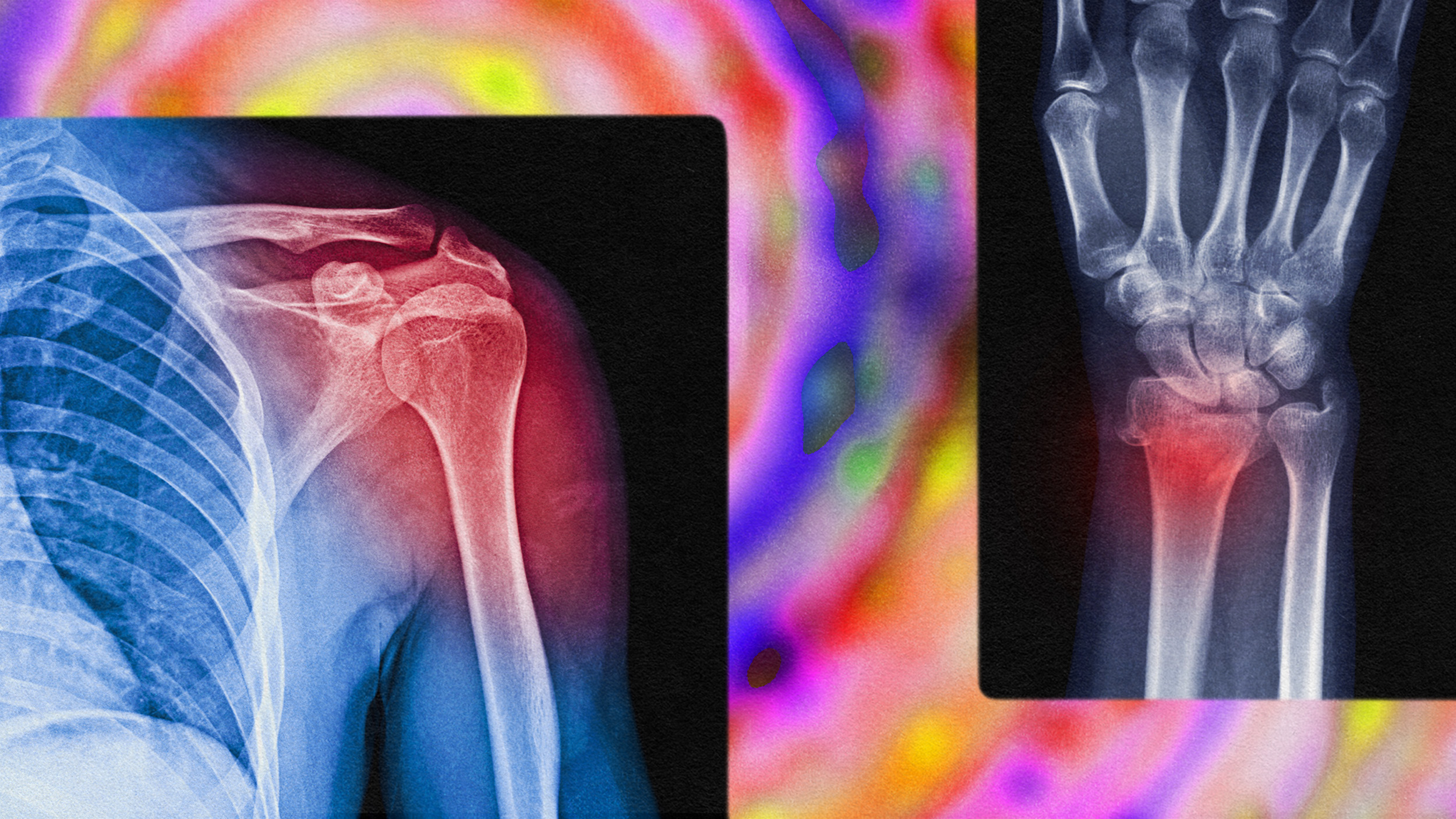Why extreme rituals might benefit psychophysiological health

Michel RENAUDEAU/Getty
- A new study examined peoples’ objective and subjective indicators of health before, during, and after a painful ritual.
- The results showed that people who underwent the painful ritual reported a greater quality of life and subjective health improvements.
- Painful rituals also seem to have a unique ability to produce “shared physiological alignment” within groups.
During the festival of Thaipusam, some Tamil Hindus will take on various physical burdens — or kavadis — as they make a pilgrimage to the temple of Lord Murugan, the god of war. It’s one of the world’s most extreme rituals, with some male participants mutilating their bodies with hooks, skewers, and other objects. But why would people put themselves through such physical pain?
A new study suggests one reason might be that painful rituals can improve health.
“When I was conducting fieldwork as a graduate student of anthropology, I was intrigued by some of the pronouncements of my informants,” study author Dimitris Xygalatas, an assistant professor of anthropology at the University of Connecticut, told PsyPost. “They described their participation in an exhausting fire-walking ritual as an experience of suffering, but at the same time also as a path to healing.”
“These claims are not uncommon in the anthropological literature. So, the intriguing part was that in various contexts, ritual activities that pose obvious health risks such as bodily injury, bleeding, or infection, may also be considered to have health benefits. Nonetheless, little research had been done on the topic, and my colleagues and I felt that we should investigate it.”
The study, published in Current Anthropology, examined 39 men from the town of Quatre Bornes in Mauritius, an island nation in the Indian Ocean. The researchers asked all of these men to wear portable monitoring devices that measured sleep efficiency, physical activity, and stress levels for three weekly periods before, during, and after a Thaipusam festival.
About half of the men mutilated their bodies during the festival, while the other half didn’t. The researchers then compared the stress, sleep, and physical activity levels from both groups. The results showed that the group who mutilated their bodies didn’t suffer any lasting pain or negative effects. In fact, this group self-reported greater quality of life and health improvements than men who didn’t participate in the piercing rituals.
Why? The researchers suggested two potential explanations: undergoing intense pain or physical sensations might trigger the body to release euphoria-inducing neurotransmitters, and intense rituals like these might encourage a sense of community and “increased social support and self-enhancement.”
“We are often too quick to dismiss traditional practices as useless or even harmful, for example, in cases where they act as a distraction from medical attention. Those cases do exist. But in many contexts, these rituals can function as mechanisms of resilience, by boosting people’s sense of wellbeing and allowing them to integrate into a social support network,” Xygalatas told PsyPost. “After all, this is why these practices have survived for millennia, and in the face of modern trends towards secularization.”
It’s not the first time Xygalatas has researched the potential benefits of painful rituals. In 2008, he and his team studied the physiological responses of fire-walkers – and also their friends family in the audience – by using portable devices that attached to their bodies. The results showed that the fire-walkers’ heart rates were often dangerously high. But those results differed from the fire-walkers’ own experiences — they typically reported feeling “completely calm” while walking across the coals.
Even more interesting were the results suggesting that painful rituals can “produce shared physiological alignment” within groups.
“Once more, the results were stunning, revealing an astonishing level of synchrony in heart-rate activity, extending from fire-walkers to spectators of the event,” Xygalatas wrote for Aeon. “Indeed, when we mapped the social network of our subject pool, we saw that the degree of synchronicity was directly related to the level of social proximity. A fire-walker’s heart-rate patterns resembled those of his wife more than those of his friend, and those of his friend more than those of a stranger. In other words, the closer the social ties between two people, the more their heart rhythms were synchronised. This relation was so strong that we were able to predict people’s social distance simply by looking at the similarities between their heart-rate patterns.”





